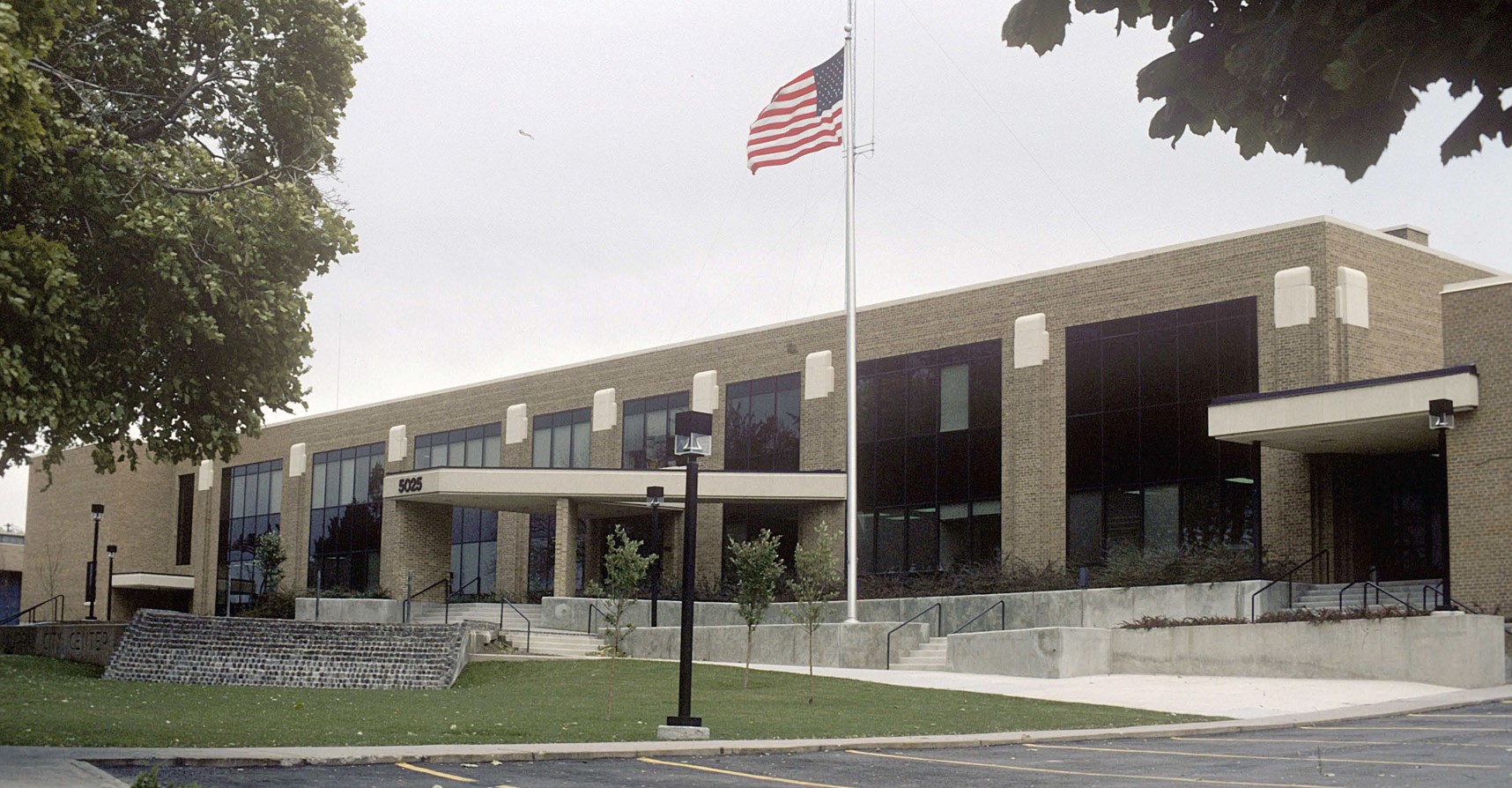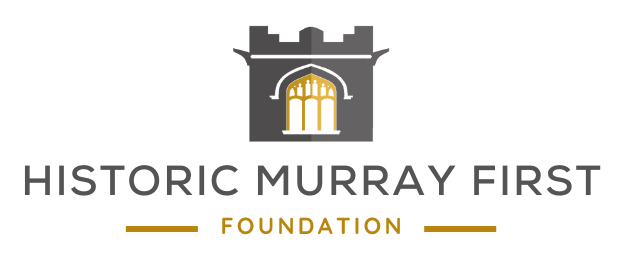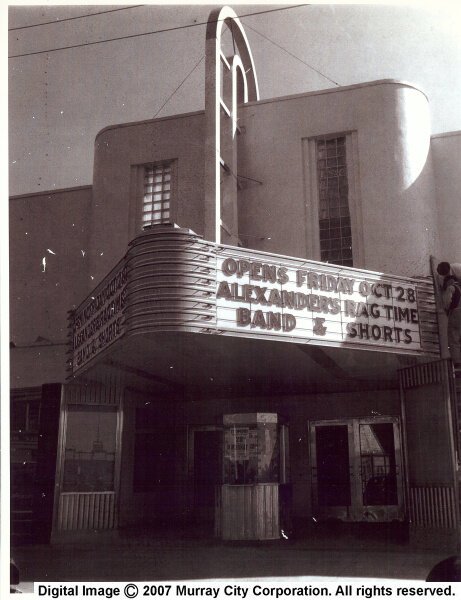By: Korral Broschinsky
In the late 1970s, Murray City faced two problems. First, the remodeled furniture store at 5461 S. State Street, which had housed the city hall since 1957, was too small for the city’s growing bureaucracy and a proposed change in government. At a special election held on July 28, 1981, the residents of Murray voted to change from a three-member commission to a five-member council and employ a full-time mayor for the first time in Murray’s history. Second, the population of demographics of families with school-age children was shifting west as large subdivisions were being developed near the Jordan River on previously open farmland.

Arlington-MCH_circa1995_SHPO
Murray City Hall, photographed circa 1995. Courtesy Utah State Office of Historic Preservation.

Arlington_School_5th_grade_class_1955_56_school_year
Fifth-Grade class in Arlington Elementary in 1955-1956. Courtesy Murray City Museum Historic Photograph Collection.
A solution to both problems was proposed when city officials considered the purchase and remodeling of the Arlington Elementary School. The school board agreed to sell the building to the Murray Redevelopment Agency (RDA) for the sum of $1,625,000. Arlington’s prominent location on busy State Street had been a safety concern for years, but the site near downtown appeared ideal for a new city hall. Arlington Elementary closed at the end of the 1980-1981 school year. Its replacement, the Horizon Elementary on Murray’s west side, was completed in November 1981. Murray City sold the old city hall to Larry Dahle, owner of a men’s clothing store, for $175,000. The city paid rent of $100 per day to occupy the building during the remodeling of Arlington Elementary.
Work on the interior gutting of Arlington began in January 1982 by Big Basin Enterprises, including the removal of the chalkboards and coat hooks that had served the community for forty years. The city began moving its offices into the remodeled space in the summer of 1982 with the help of the Murray High School football team. In an article in the Murray Eagle on August 19, 1982, Mayor LaRell Muir declared “It doesn’t look like a school building anymore.” The same article described the process: “Outside the building’s bricks were cleaned and old windows replaced with tinted, large-pane glass. The front of the building has a new entrance and the grounds are undergoing extensive landscaping with installation of a water fountain and waterfall.”

Arlington_School_undated_MCM
Arlington Elementary front entrance, undated photograph. Courtesy Murray City Museum Historic Photograph Collection.

guttingArlington_1982
Arlington Elementary being remodeled in the summer of 1982. Courtesy Murray City Museum Historic Photograph Collection.
The new city hall would have a much larger council chamber, two courtrooms for the 5th Judicial Circuit Court, and three jail cells for the city’s police department on the upper floor. The large parking lot in the rear (formerly the school playground) would be available for patrons of the Ken Price Ballpark to the east. The remodeling project was completed for approximately $3 million. The city was recognized by the Utah Heritage Foundation (now Preservation Utah) for the preservation and adaptive reuse of a historic building.
On October 9, 1982, the new Murray City Hall was dedicated with remarks from Mayor Muir and Chairman Larry Catten, with Kathleen Hase, Miss Murray, participating in the ribbon cutting ceremony. Included in the program was the dedication of the Freedom Shrine on an interior wall, a series of 28 plaques featuring copies of documents famous for their significance in American history. Two months later, on December 9, 1928, the Murray Eagle, reported the display cases in city hall’s main corridors were filled with artifacts and photographs from Murray’s history that Arlette Day, owner of Day Murray Music, had been collecting since America’s Bicentennial in 1976. With hundreds of articles still in storage, Arlette Day, expressed her hope for a dedicated museum in the city’s future. She explained her interest with this statement, “You can’t really know about yourself unless you know something of your past.”

MayorPett_MurrayCityHall_1990s
Mayor Lynn Pett standing in front of the Murray City Hal, circa 1990's. Courtesy Murray City Museum Historic Photograph Collection.
Murray City finally opened its history museum in March 2003, when the city’s emergency services moved out of the former elementary school’s multipurpose/lunchroom. The museum’s exhibit on Murray’s smelter history was partially funded by mitigation money from the demolition of the iconic smokestacks. Today, Murray City is building a new city hall and the history museum has moved to the Murray Mansion on Poplar Street. Preservationists hope that a new use can be found for the former Arlington Elementary School in order to preserve the significant WPA-era building and its parklike setting, which is one of the rare green spaces along State Street in Salt Lake County.







